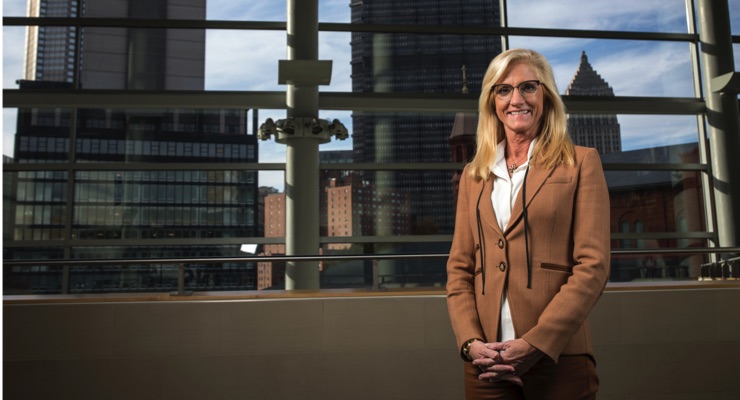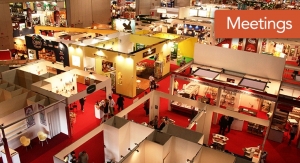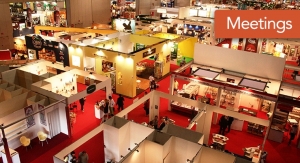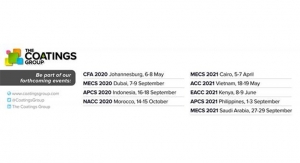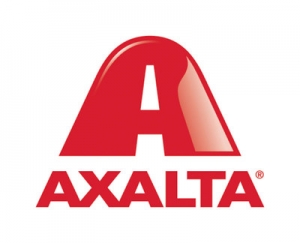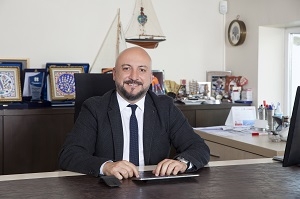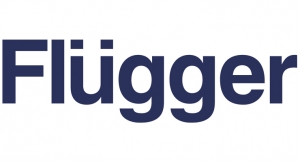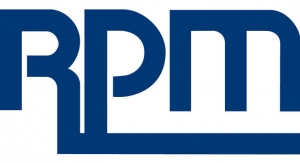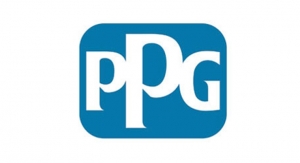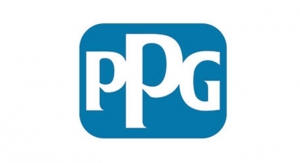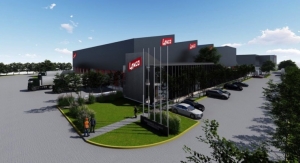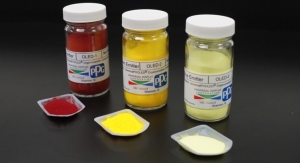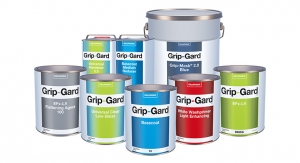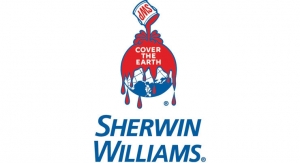Coatings World Associate Editor Anthony Locicero spoke with Amy Ericson, PPG senior VP, packaging coatings, specialty coatings and materials about sustainability, business during COVID-19, diversity in the workplace and more.
CW: Let's start with your background.
Ericson: My professional background has always been in the engineering and manufacturing field, and was largely inspired by my now 91-year old father who spent 45 years as a chemical engineer, and my hard-working mother who was raised on a farm in Maryland.
I earned my Bachelor of Science degree in chemical engineering at Penn State University and a Master of Business Administration degree from Harvard Business School.
I started my career at DuPont as product development and sales engineer, then worked for Exxon Company International, and Alstom, with my most recent Alstom role being president and CEO of U.S. operations.
Following a 16-year career with Alstom, General Electric acquired Alstom and put me in charge of the global Water Chemical and Monitoring Solutions business. In July 2018, I joined PPG as senior VP, Packaging Coatings, Specialty Coatings and Materials, and Corporate Strategy.
My role within PPG is to energize, motivate and enable our talented people within the packaging coatings, specialty coatings and materials, and corporate strategy teams. I’m all about simplifying the complex and removing barriers so that people can perform to their highest potential – I encourage imaginative, creative initiatives because that is how we are able to differentiate ourselves and cement true strategic customer partnerships.
In addition, I’m a firm believer in the power of mentorship and continuing to prepare the next diverse generation. I make it a point to volunteer and mentor young people, especially women, on the countless opportunities available through a career in STEM.
CW: Talk about the packaging and specialty coatings and materials businesses.
Ericson: In our Packaging business, we develop protective coatings for the inside and outside of metal packaging that pretty much every consumer around the world has in their homes.
From canned food to canned beverages to canned personal and home care products like shaving creams and furniture polish – we coat them all! Our coatings help ensure that what’s in the package can be safely ingested or applied to skin by humans and their pets. It sounds simple. But it is a highly technical and vital business.
I am also proud that we are helping to drive sustainability in the packaged goods markets. Metal is one of the most highly recycled materials in the world and we help make use of metal possible for packaging food and beverages. Metal packaging is part of the solution to eliminating single-use plastic bottles.
Shifting gears to PPG’s specialty coatings and materials business, which develops and produces a diverse group of products for a broad range of customers and industries, comprised of five core segments: precipitated silica, optical monomers and coatings, PPG TESLIN substrate, photochromic dyes and phosphorescent organic light-emitting diode (OLED) materials. Real-life examples of these product applications include:
- Silica used in tires to improve safe handling and fuel efficiency;
- Lens materials and scratch-resistant coatings that help eyeglass wearers see clearer, while also protecting them from the sun’s harmful radiation and other hazards;
- PPG Teslin paper that provides long-lasting durability and tamper-evident security to ID cards, passports and credentials around the world;
- OLED materials in high-definition, energy-efficient television and smartphone displays;
- Filtration devices that remove oil and other contaminants from industrial process and wastewater so it can be disposed or reused.
Whether we’re talking about products like water-based coatings that make infinitely recyclable cans more durable and attractive, or OLED materials that make the picture on your big screen TV more clear, I’m proud that both of the businesses that I lead feature technologies that are integral parts of PPG’s purpose to protect and beautify the world.
CW: What was business like pre-COVID-19 vs. during the pandemic?
Ericson: Like many industries, the Coronavirus has impacted the coatings industry overall and PPG’s global businesses in many ways. With almost all countries sheltering in place for an extended period of time, travel has slowed and as a result has dampened demand for some of our products, including aerospace, automotive refinish and automotive OEM.
On the other hand, we’ve seen an increase in demand in some of our businesses, including certain regions of our packaging business. During the pandemic, with populations largely sheltering in-home, demand fluctuations have been driven by cultural habits.
For instance, in markets like South America, canned beverage consumption primarily happens outside of the home. In the second quarter, during quarantine, we saw the beverage can market in Brazil pull back. Whereas, in other markets like the U.S., it is quite common to drink canned beverages at home, so that market is booming. One global constant, however, has been a uniform increase in demand for canned food as people pantry stock, seeking safe and healthy products with long shelf lives. It often surprises consumers to learn that most canned vegetables go from field to can in a matter of hours!
Overall, while the pandemic has introduced uncertainty in most global markets, our long-term expectation is that demand for metal packaged goods will only continue to grow. In fact, the beverage can industry is currently sold out in many markets – there are brands who want to package in infinitely recyclable cans, but cannot get ahold of them. Some of our customers have noted that every can they will make through October 2021 is already spoken for.
In PPG’s specialty coatings and materials business, while tire, battery and optical end markets were adversely impacted by COVID-19, the business did find opportunities to help in the COVID fight. PPG’s specialty coatings and materials business has been supplying silicas used in N95 respirator straps and rubber medical goods, as well as materials in safety glasses that help protect the eyes and vision of first responders. PPG Teslin material is also used in the medical field for durable hospital ID wristbands and the labeling of critical medical products.
CW: What have some of the biggest challenges been during this time?
Ericson: One of the challenges we’ve faced is keeping up with an increase in packaging coatings demand at some of our manufacturing facilities. For example, as demand increased at our packaging coatings plants in Bodelshausen, Germany, and Tiel, Netherlands, employees from other PPG business units based in Weingarten, Germany, and Delfzijl, Netherlands, facilities relocated to support production and fulfillment.
During this pandemic, our challenges haven’t really been much different from most businesses. Employee safety has remained our top priority, and we continue to focus on remote-connectedness, supply chain adjustments and just generally adapting to this uncertain time.
In addition, there have been notable changes in consumer behaviors during this unforeseen global event. Notably, many of the slowly evolving macro consumer trends that existed prior to the pandemic have rapidly accelerated. For instance, the growth of e-commerce and digital tools have completely outstripped projected growth. While we know the can is attractive for its inherent lightweight, long shelf life, sustainability profile, and durability – those qualities are even more attractive now that consumers are increasingly having consumable products shipped and delivered to their houses. The challenge for us is to similarly accelerate the development of increasingly wide-ranging, safe, and protective coatings that enable our customers to pack an even wider variety of products in cans.
In the metal packaging industry, it is especially important to be a first mover in any new frontier. Once can makers and brands find out that we have developed a solution for safely packing hard to hold food and beverages, we become the go-to in that space. We want to be the global “go-to” in all packaging coatings uses.
CW: Who are some of your customers?
Ericson: In packaging coatings, we work with every major global can manufacturer and most major consumer brands that use cans for packaging. The can makers are our direct customer, and we’re increasingly working directly with brands to both ensure we understand their pressing and dynamic requirements for consumer health and safety, as well as understand how we can help provide specialty external coatings to differentiate their products on shelf. In fact, we recently estimated that in the past five years, more than 250 billion cans have been internally coated with our non-BPA coatings.
In the specialty coatings and materials business, we recently celebrated the 20-year anniversary of our strategic partnership with Universal Display Corporation. PPG is the exclusive manufacturer of UDC’s UniversalPHOLED emitter materials that enable the development of low-power and eco-friendly displays and lighting on smartphones, televisions and tablets. Other customers in this business include a mix of global and regional customers ranging from leading tire manufacturers and mobile screen producers to eyeglass lens makers and label and printed packaging suppliers.
CW: Do you see continued growth for the packaging segment as the country is still slowly opening up – or with the possibility of another lockdown if cases rise again?
Ericson: Like everyone, my fervent hope is that we are able to find a global cure for this crisis – sparing lives and mitigating hardship as quickly as possible.
And the fact is, it’s very difficult to know what the next few months will hold.
As we look toward the latter half of 2020, we anticipate that demand will remain strong for packaging coatings for both food and beverage in the U.S. Until a vaccine is widely available, consumers are likely to stay home and continue cooking their own meals, contributing to prolonged demand in the U.S. specifically. We anticipate that demand for packaging coatings in EMEA may begin to soften, and Asia Pacific and Latin America will remain key players in the packaging supply export markets for North America and Europe.
CW: Sustainability is a huge focus for the industry. How does PPG deliver on this?
Ericson: Protecting and beautifying the world, and our culture of continuous improvement, continue to be the backbone of PPG’s sustainability promise. Whether it is increasing the efficiency of our operations or our customers’ operations, our improvement efforts naturally extend to many areas that affect our sustainability performance.
We’re proud of the overall sustainability progress we achieved in 2019, including 33 percent of sales from sustainably-advantaged products and processes; 25 percent waste disposal intensity reduction; 32 percent improvement in spills and releases; 33 percent of manufacturing and R&D locations with zero landfilled process waste; among other achievements.
Specifically, recyclability is one of the core benefits of metal packaging for food, beverage and personal care. Metal is one of the most highly recycled materials in the world – in fact, approximately 75 percent of aluminum ever produced is still in use today, and 90 percent of the steel ever produced is still in use today. Additionally, 70 percent of all new beverage categories are being launched in metal packaging, up from 30 percent just a few years ago.
Consumers are increasingly more conscious of their plastic consumption and are often opting for more sustainable solutions like metal or aluminum. PPG coatings enable the use of metal packaging, which in turn contributes to eliminating single-use plastic bottles. In addition to recyclability, the benefits of canned food include storage in ambient temperatures, protection from oxygen and light, and longer shelf life.
In the specialty coatings and materials business, a great example of our sustainably-advantaged products is our line of PPG INHIBISIL anti-corrosion pigments that coatings manufacturers – especially those impacted by REACH (Registration, Evaluation, Authorisation and Restriction of Chemicals) – are using to replace chrome-based and other toxic anti-corrosion pigments in solvent-borne primers.
For PPG, safety is another important aspect of sustainability, and it remains our top priority. Many of our industrial coatings customers are turning to PPG Teslin substrate for product labels because it helps them enhance workplace safety by absorbing and dissipating static build-up generated during the labeling process.
CW: As a woman in a leadership position, what are your views on the power of diversity?
Ericson: We know that diverse teams are more effective, profitable and innovative because of the number of different perspectives through which a challenge is seen. It is a fact that inclusion and diversity have a measurable positive impact on companies’ bottom lines.
According to a January 2018 study by McKinsey titled “Delivering through Diversity,” companies in the top-quartile for gender diversity on executive teams were 21 percent more likely to outperform on profitability and 27 percent more likely to have superior value creation.
Likewise, companies in the top-quartile for ethnic and cultural diversity on executive teams were 33 percent more likely to have industry-leading profitability. This continues to prove that inclusion and diversity can be valuable differentiators.
Women and minorities traditionally have been underrepresented in manufacturing, and they present an incredible opportunity for manufacturers across the United States to tap into a fresh pool of talent, innovation and perspective.
When manufacturers make a concerted effort to recruit, retain and promote a diverse workforce, the result is a wider array of experiences and backgrounds that help to inform better solutions to the challenges presented by our increasingly global economy. I’ve seen firsthand that teams with diverse sets of experiences and backgrounds develop the best, most creative solutions.
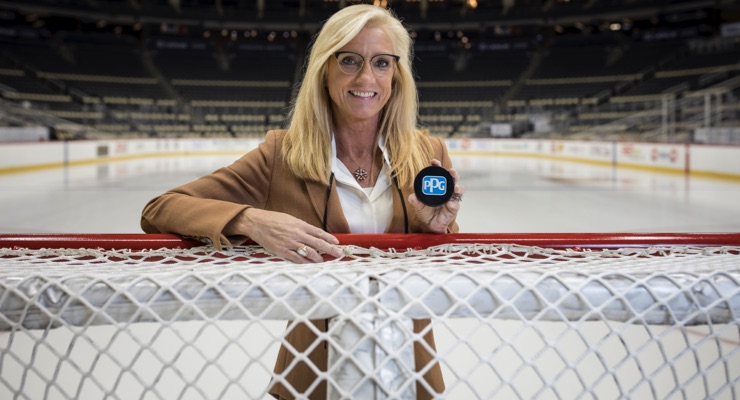
Amy Ericson is senior VP, packaging coatings, specialty coatings and materials at PPG

